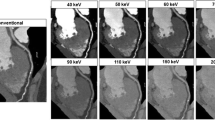Abstract
The evolution of CT can be characterized remarkably well by three phases of developments assigned to the 1970s, 1980s and 1990s. The first decade saw rapid innovations followed by a phase of consolidation and slow growth in the 1980s, and finally a third phase of very rapid development including spiral CT and multirow detectors in the 1990s. The evolution of technical developments during these first three decades is briefly reviewed. CT has reached a very high degree of maturity, mastering almost all clinical demands. The focus of this review is set on potential future developments and trends. Further doubling or multiplying of the numbers of slices acquired simultaneously cannot be expected to provide further essential innovations. New paradigms are required to advance the field. Future potential developments are outlined, including multisource, multidetector scanners for cardiac and dual-energy CT, new detector technologies, approaches to data handling and dose management.
Similar content being viewed by others
Author information
Authors and Affiliations
Corresponding author
Rights and permissions
About this article
Cite this article
Kalender, W.A. CT: the unexpected evolution of an imaging modality. Eur Radiol Suppl 15 (Suppl 4), d21–d24 (2005). https://doi.org/10.1007/s10406-005-0128-3
Issue Date:
DOI: https://doi.org/10.1007/s10406-005-0128-3




